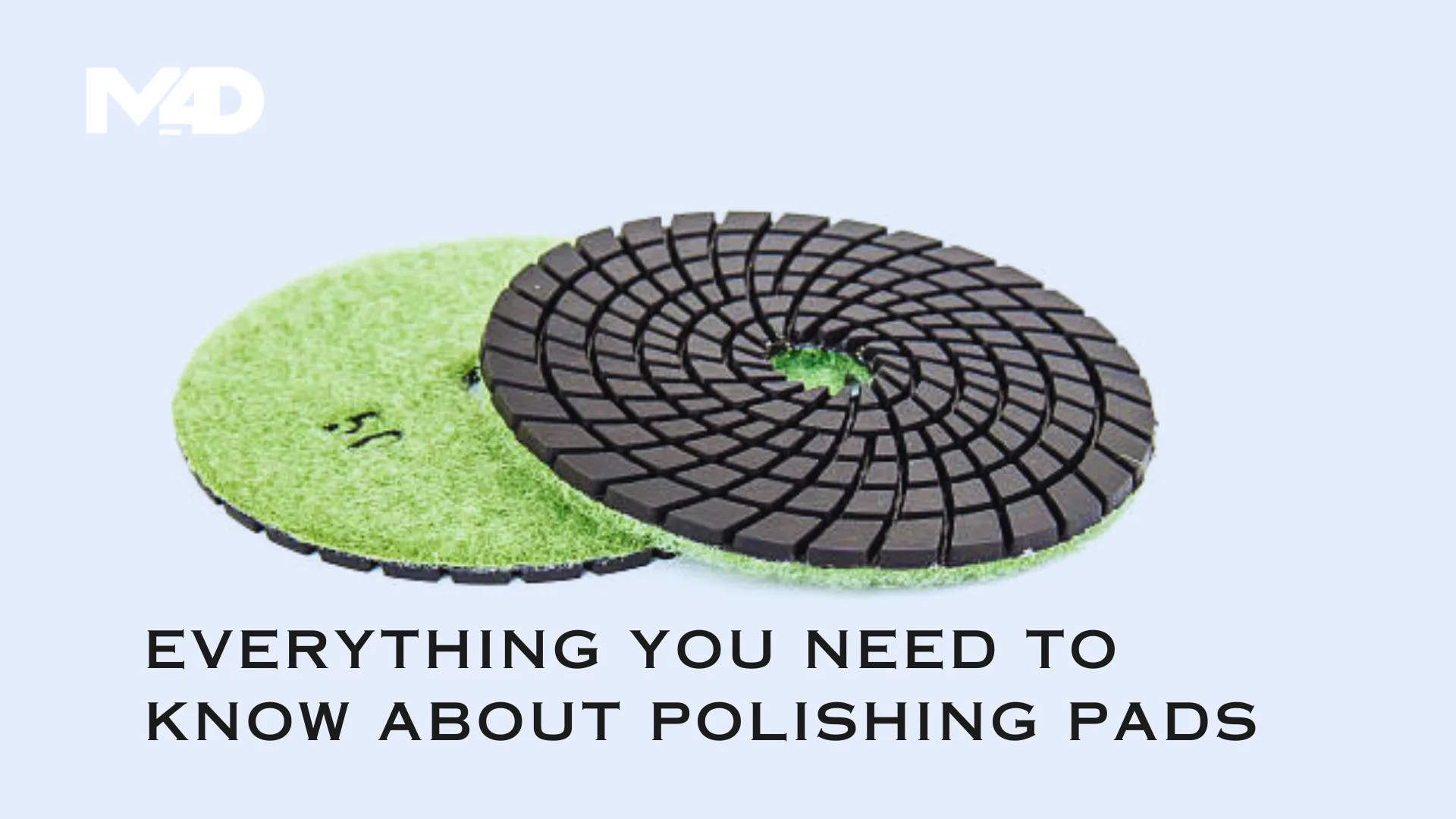Everything You Need to Know About Polishing Pads

Introduction to Polishing Pads
In the world of detailing and surface preparation, polishing pads play a pivotal role. Whether you’re an automotive enthusiast, a professional detailer, or a homeowner looking to restore the shine of various surfaces, understanding the ins and outs of polishing pads is crucial. This comprehensive guide will delve into the various types of polishing pads, their uses, and how to choose the best one for your needs.
Types of Polishing Pads
Foam Polishing Pads
Foam polishing pads are among the most commonly used types. They come in various densities and types, each designed for specific tasks.
- Soft Foam Pads: Ideal for applying waxes and sealants, soft foam pads offer a gentle touch and are less aggressive, making them perfect for final polishing.
- Medium Foam Pads: These are versatile and can be used for both polishing and light cutting. They offer a balance between correction and finish.
- Heavy-Duty Foam Pads: Designed for more aggressive cutting, these pads can tackle deeper scratches and paint defects.
Microfiber Polishing Pads
Microfiber polishing pads combine the benefits of microfiber with the polishing power of foam. These pads are known for their high cutting ability and are ideal for removing stubborn defects.
- Cutting Microfiber Pads: These pads are aggressive and designed to handle significant paint correction tasks.
- Finishing Microfiber Pads: These offer a finer cut and are used to refine the surface after heavy correction.
Wool Polishing Pads
Wool polishing pads are made from natural or synthetic wool fibers. They are especially effective for heavy cutting and are often used in conjunction with more aggressive compounds.
- Natural Wool Pads: Known for their durability and aggressive cutting power, these pads are often used by professionals.
- Synthetic Wool Pads: These offer similar performance but may be easier to clean and maintain.
Hybrid Polishing Pads
Hybrid polishing pads combine foam and microfiber materials. These pads aim to offer the best of both worlds, providing an optimal balance between cutting and finishing.
- Foam-Microfiber Hybrid Pads: These pads are designed to enhance cutting efficiency while maintaining a smooth finish.
Choosing the Right Polishing Pad
Selecting the correct polishing pad depends on several factors, including the type of surface you’re working on and the level of correction needed. Here’s a guide to help you make the right choice:
Surface Type
- Painted Surfaces: For automotive paint, foam and microfiber pads are typically preferred.
- Metal Surfaces: Wool and microfiber pads are effective for cutting and polishing metal surfaces.
- Glass Surfaces: Use soft foam pads to avoid damaging glass.
Level of Correction
- Light Correction: For minor blemishes and swirl marks, soft foam or finishing microfiber pads are sufficient.
- Medium Correction: For moderate scratches and defects, medium foam or cutting microfiber pads are recommended.
- Heavy Correction: For deep scratches and severe defects, use heavy-duty foam or aggressive wool pads.
Pad Size and Compatibility
- Pad Size: Choose a pad size that matches your machine’s backing plate. Larger pads cover more surface area but may be less precise, while smaller pads offer more control for detailed work.
- Machine Compatibility: Ensure the pad is compatible with your polishing machine, whether it’s a rotary or dual-action polisher.
Using Polishing Pads Effectively
Preparation
Before using any polishing pad, ensure it is properly cleaned and conditioned. A clean pad prevents contamination and ensures optimal performance.
Application
- Applying Polish or Compound: Apply the polish or compound to the pad in small amounts. Too much product can lead to excessive splatter and reduced effectiveness.
- Technique: Use overlapping passes and consistent pressure to achieve an even finish. Avoid pressing too hard, as this can cause pad wear and reduce effectiveness.
Cleaning and Maintenance
Regular cleaning and maintenance of polishing pads are essential for their longevity and performance.
- After Use: Rinse the pad immediately after use to remove excess product. Use a pad cleaning solution or soap to thoroughly clean the pad.
- Drying: Allow the pad to dry completely before storing it. Avoid leaving it in direct sunlight or high temperatures, as this can damage the pad.
Common Issues and Troubleshooting
Pad Sticking
If the pad sticks to the surface, it may be due to excess product or improper technique. Reduce the amount of product used and ensure you’re applying it evenly.
Pad Wear
Overuse or improper maintenance can lead to excessive wear on the pad. Regularly inspect pads for signs of wear and replace them as necessary.
Surface Hazing
If you notice hazing or a cloudy appearance after polishing, it may be due to an incorrect pad choice or technique. Switch to a finer pad or adjust your technique to achieve a clearer finish.
Conclusion
Understanding and utilizing the right polishing pads is crucial for achieving optimal results in any detailing or surface preparation task. From foam and microfiber to wool and hybrid options, each type of pad serves a specific purpose and is suited for different tasks. By selecting the appropriate pad, using it correctly, and maintaining it properly, you can enhance your surface polishing results and achieve a professional finish.
Everything You Need to Know About Polishing Pads

Leave a reply
Your email address will not be published.